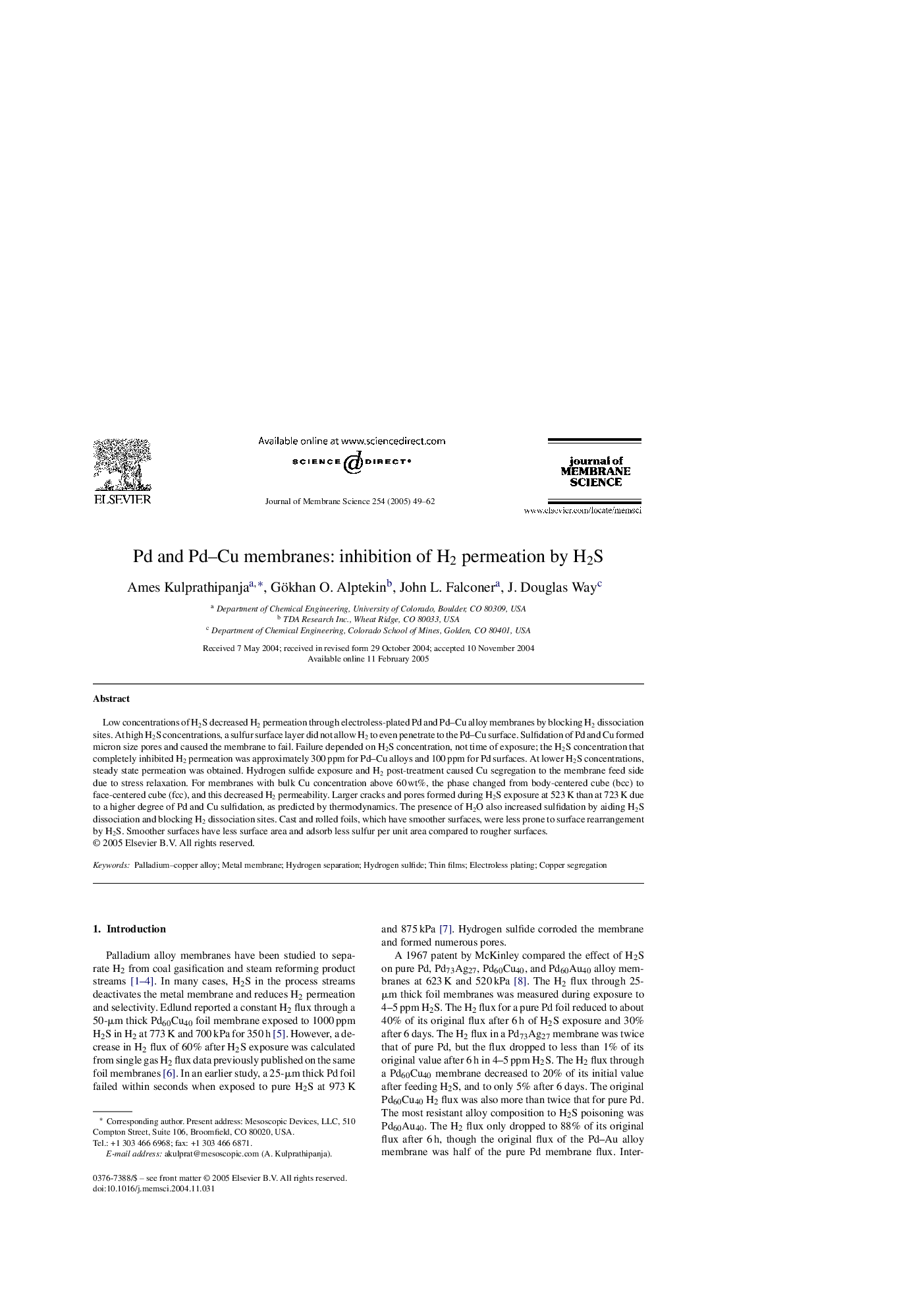| کد مقاله | کد نشریه | سال انتشار | مقاله انگلیسی | نسخه تمام متن |
|---|---|---|---|---|
| 9684867 | 1456216 | 2005 | 14 صفحه PDF | دانلود رایگان |
عنوان انگلیسی مقاله ISI
Pd and Pd-Cu membranes: inhibition of H2 permeation by H2S
دانلود مقاله + سفارش ترجمه
دانلود مقاله ISI انگلیسی
رایگان برای ایرانیان
کلمات کلیدی
موضوعات مرتبط
مهندسی و علوم پایه
مهندسی شیمی
تصفیه و جداسازی
پیش نمایش صفحه اول مقاله

چکیده انگلیسی
Low concentrations of H2S decreased H2 permeation through electroless-plated Pd and Pd-Cu alloy membranes by blocking H2 dissociation sites. At high H2S concentrations, a sulfur surface layer did not allow H2 to even penetrate to the Pd-Cu surface. Sulfidation of Pd and Cu formed micron size pores and caused the membrane to fail. Failure depended on H2S concentration, not time of exposure; the H2S concentration that completely inhibited H2 permeation was approximately 300Â ppm for Pd-Cu alloys and 100Â ppm for Pd surfaces. At lower H2S concentrations, steady state permeation was obtained. Hydrogen sulfide exposure and H2 post-treatment caused Cu segregation to the membrane feed side due to stress relaxation. For membranes with bulk Cu concentration above 60Â wt%, the phase changed from body-centered cube (bcc) to face-centered cube (fcc), and this decreased H2 permeability. Larger cracks and pores formed during H2S exposure at 523Â K than at 723Â K due to a higher degree of Pd and Cu sulfidation, as predicted by thermodynamics. The presence of H2O also increased sulfidation by aiding H2S dissociation and blocking H2 dissociation sites. Cast and rolled foils, which have smoother surfaces, were less prone to surface rearrangement by H2S. Smoother surfaces have less surface area and adsorb less sulfur per unit area compared to rougher surfaces.
ناشر
Database: Elsevier - ScienceDirect (ساینس دایرکت)
Journal: Journal of Membrane Science - Volume 254, Issues 1â2, 1 June 2005, Pages 49-62
Journal: Journal of Membrane Science - Volume 254, Issues 1â2, 1 June 2005, Pages 49-62
نویسندگان
Ames Kulprathipanja, Gökhan O. Alptekin, John L. Falconer, J. Douglas Way,